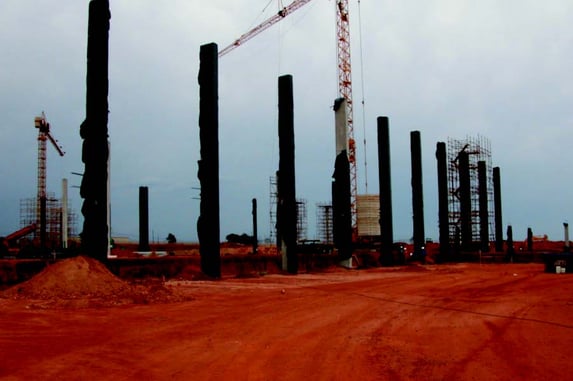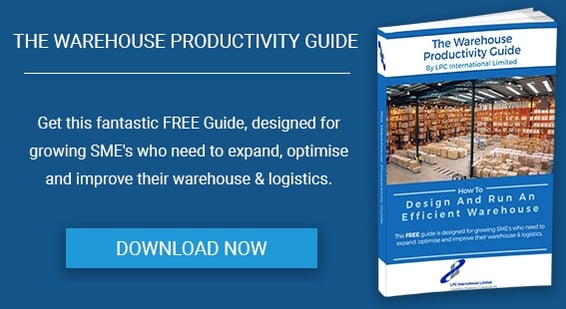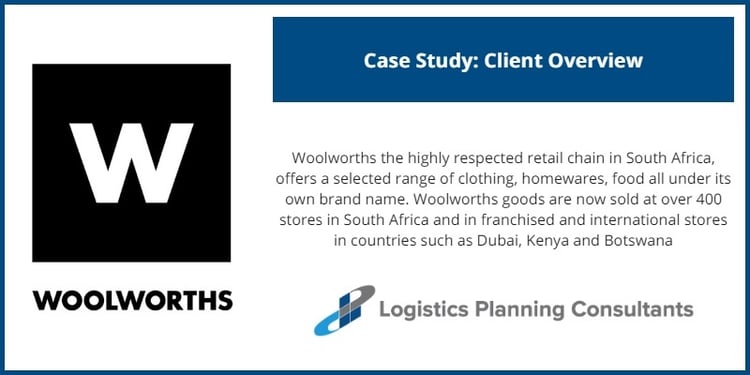
Woolworths previously operated from their City Deep site in Johannesburg. Over time, and against continually increasing demand for product storage and distribution, the site had undergone extensive alterations to accommodate the growth in the business, to the extent that some parts of the operation were moved and managed ‘off site’. With the site landlocked, City Deep could not physically support business volume growth.
Project Overview
A new single campus would be required to support the future business to cater for all Woolworths / UPN distribution requirements for all the product ranges, equipment store / textiles and transport facilities operating from one site, with the development designed to sustain future growth.
Given the importance of the project to Woolworths and the order of capital costs involved, Woolworths took the view that advice should be sought from an independent specialist organisation during the conceptual planning (and costing) and detailed design stages of the project. LPC International (LPC) were retained to fulfil this role.
Contents (click to jump to a section):
- The Brief
- The Benefits
- Feedback From The Client
- Campus Design
- Site Selection
- Development
- Performance Specifications
1. The Brief
The brief was to provide a campus that fulfilled the initial needs of the business. The design had to be flexible to meet changing needs in the business, to be able to adapt to the potential changes at minimal capital cost outlay.
Behind the DC’s veneer are fundamental design considerations that allow the DC to be institutional in respect of its flexibility to allow the business the opportunity to utilise the building for third party business or as part of the projected development.
LPC’s original brief was to conduct a strategic Distribution Centre (DC) location study to identify the most cost effective and efficient DC network to meet the future needs of Woolworth’s Foods and Textiles operations forecasting growth.
The study involved using Computer Modelling techniques (DiPS*) to build and evaluate alternative scenarios and to identify the comparative operational costs and Key Performance Indicators (KPIs) associated with each.
*The distribution centre of gravity analysis was conducted using DiPS which is a purpose-developed computer model which can be used toexamine a wide variety of strategic and tactical questions in distribution and transport operations.
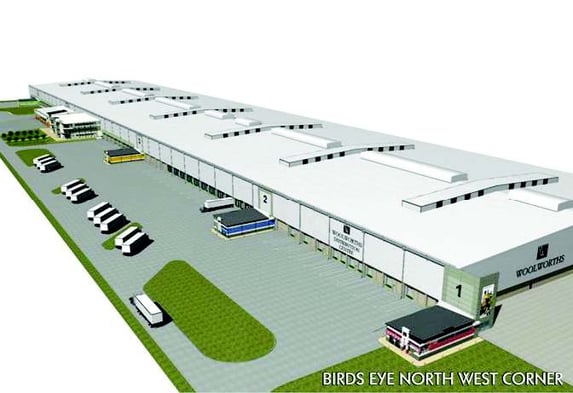
The Scenarios Included:
Building an ‘AS-IS’ Model of the current distribution network to include:
•Foods DC’s
•Textiles DC’s
•Delivery operations from DC’s to stores
•Supplier deliveries from production factories or points of import to RSA, into the DC’s
•Store delivery demands in terms of:
•Demand volumes (cases, hanging garments etc)
•Delivery frequencies
•Delivery restrictions, by store, in terms of vehicle sizes and time curfews
•Fixed and variable truck offloading times
•DC warehouse resources, and all related fixed and variable operational costs
•DC transport resources
•Inventory costs
•Sales order processing and other distribution related IT/IS costs 
The ‘AS IS’ model was validated to ensure that it provided a sufficiently accurate representation of the current network at the time, and where it was necessary, made adjustments to enhance its accuracy.
Using the validated ‘AS IS model’ cost indices and KPI’s for benchmarking purposes were generated against alternative scenarios, these being:
• The optimum location and size for a single campus development for both Foods and Textiles and to identify the warehousing and transport related operational costs and resource requirements and being able to provide benchmarks for comparison with the current ‘AS-IS’ model.
• The optimum locations each for separate Foods and Textiles DC’s, (one of each), and again identifying the warehousing and transport related operational costs and resource requirements.
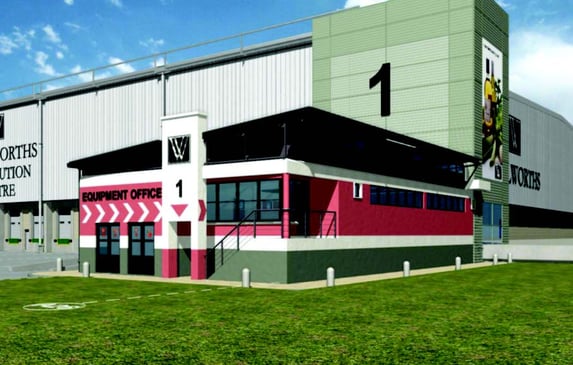
2. The Benefits
• The least total cost distribution network based on the use of multiple numbers of DC’s each for Foods and, or, Textiles and the warehousing and transport related costs and resource requirements for each, together with the store and volume allocations to each.
•The least total cost distribution network(s) that can be achieved through the combined use of existing DC resources (Foods and, or, Textiles) combined with new and again, deriving the warehousing and transport related costs and resource requirements for each, together with store and volume allocations to each.
• Identify and quantify the potential opportunities and benefits to be achieved by using a common delivery fleet for Foods and Textiles deliveries to stores.
The operational costs were then benchmarked and the unit cost and performance KPI’s for each scenario against the AS IS results bench marched against each other.
Based on the modelling, we advised on the ‘Key Decision Drivers’ that influence operational costs and performance and the relative importance of each.
The Results Of The Scenarios Were Ranked By:
•Operational costs
•Unit cost, performance
•KPI’s
Jointly with UPN and Woolworths, two preferred scenarios were selected and sensitivity testing was conducted on each to determine the potential effects on them of:
•Changes in demand or the rate of growth in demand
•Potential changes in key cost parameters (e.g. transport, fuel costs, building rental costs, interest rates, etc)
The distribution centre off gravity study indicated that the development should be located close to the junction of the N1, N3 and M1 though, as the N1 is busy and sometimes congested, the campus could be located on the N3 at Bedfordview close to the N12. This point was identified as the Midrand / Centurion distribution hub.
3. Feedback From The Client
"The centurion distribution hub offers excellent and flexible road infrastructure to ensure efficient on time deliveries to stores now and in the future.
Suppliers delivering to Woolworth’s distribution centres in Gauteng will drive less kilometres to deliver their product. This will also ensure their trucks spend less time on the roads. Gas emissions for both primary and secondary distribution will be reduced.
From a workforce perspective, in the long term, Centurion will ensure easier and more flexible transportation for the workforce due to the Tembisa and Olievenhoutbosch areas in close proximity."
4. Campus Design
Two sites were short listed for consideration located close to the junction of the N1, N3 and M1.
Concept designs were prepared for the sites together with initial cost plans.
The concept designs were generated from revised current volumes at that time in conjunction with projected new store openings, new store formats and further sales growth from existing stores. Volume capacity calculations indicated that sales could more than double in the years on projected rates of growth.
The Distribution Centre would comprise of:
•All food disciplines
•Meat Plant (subsequently removed from scope)
•All textile requirements
•Tray wash
•Store equipment 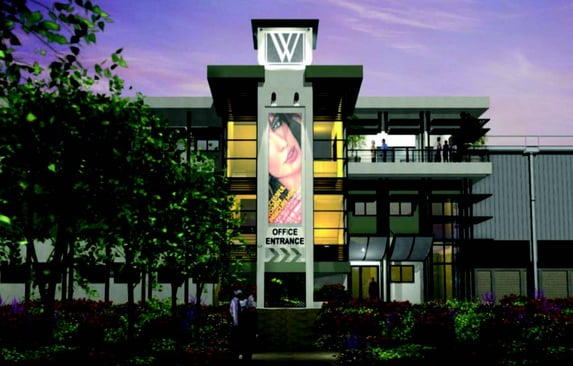
In preparing the plans the size of each individual chamber, (Long life ambient, peri ambient, chill, frozen etc) for the Foods operations, plus the Main Offices and ancillary operational offices were calculated.
The concept plans were developed to make best use of the site, in terms of site occupancy, site topography (by minimising potential cut and fill requirements) gradients on roadways and parking areas and including site access and egress arrangements that are likely to be acceptable to the local Council and Highways Authority.
Budget cost calculations were prepared by Woolworths for the development of the sites. Cost were based on measured quantities on an elemental basis by building area of site and summarised under the main cost headings:
•Land
•Site clearance and levelling
•Substructures
•Building superstructures
•Mechanical, Electrical and Refrigeration works
•External works
And for fitting out items:
•Storage systems and equipment
•Materials Handling Systems and Equipment
•WMS System
•Loose equipment
•Communications etc
•Trays, roll cages, pallets and other unit load devices
•Compactors, balers
•Plant and machinery 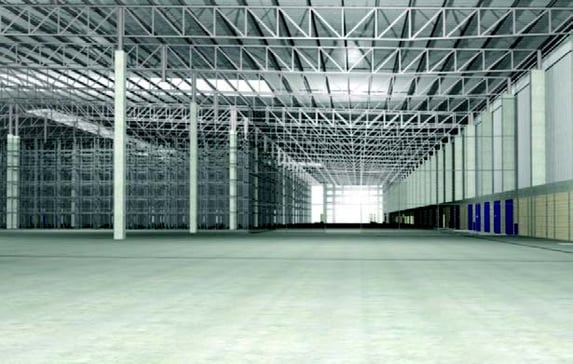
Specific recommendations were made as to which site we preferred with reasons why, providing details of the pros and cons of each of the sites considered.
5. Site Selection
The preferred site was Midrand and from a planning perspective was chosen for the following reasons:
The size and shape of the site was paramount to facilitate the long term planning horizon of the distribution centre.
Although the development would initially be circa 80,000m² the site needed to allow for future development to circa 125,000m².
For safety, and with high volumes of traffic, separate ingress and egress points to the site for goods vehicles and cars/buses was required.
To avoid potential congestion on the public highways, goods vehicles entering the site are required to queue on the site so it was important that the site could accommodate a long lead in to the gatehouse for vehicle processing.
The shape needed to facilitate goods vehicle parking and allow the planning for one way goods vehicle flows, circulation roads to segregate supplier vehicles and Woolworths vehicles.
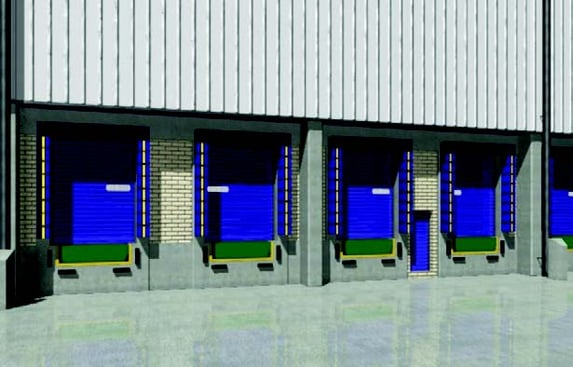
6. Development
Prior to proceeding with the finalised conceptual design it was necessary to sense check / re-evaluate the design data base for the development taking into account of both earlier data and new data, and to reconcile the design parameters and assumptions used by Woolworths and LPC in sizing the chambers and projected growth rates.
The development of the detailed conceptual design was to include / consider the following:
•Warehouse facilities for temperature controlled foods, stock held and flow-through.
•Warehouse facilities for Ambient Foods, stock held and flow-through
•Warehouse facilities for textiles and homewares
•Retail equipment storage facilities
•Warehouse Offices, Employee Amenities etc
•Tray wash / Equipment Store
•Regional Offices, standing alone from the DC development
•Gate House
•Roadways and hardstandings for commercial traffic and private vehicles
•Plant Rooms and other facilities as necessary
•QC Facilities
•Space for future expansion
Plus potential for the introduction, if and when required:
•Meat plant
•Vehicle Maintenance Unit
•Fuel bunkering and vehicle wash facilities
And, within the design, to plan so that the time based phases of the development migrate as flexible and as economic a manner as possible.
7. Performance Specifications
Preparation of logistically based statements of the performance requirements and specifications against the developed conceptual design plans were written following the sign off of the drawings.
These statements included advising the ‘Design Team’ of all critical dimensional data such as column structural grids, clear spans, heights etc, floor loadings and flatness, gradients for external yard operations, loading dock arrangements, racking and aisle widths.
Also advising on the layouts of warehouse storage and working areas, all offices and employee amenity areas, equipment centre, gatehouse and plant rooms.
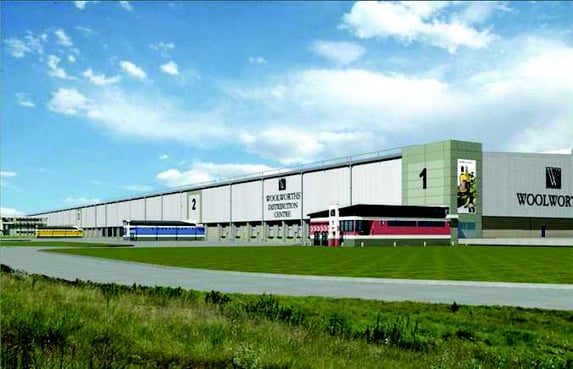
Logistics based performance specifications were written on the following:
•Loading docks
•Fire protection systems
•Mechanical services
•Electrical services and lighting (internal and external)
•Refrigeration installation
•External works
•Ancillary buildings
•Security systems, CCTV and alarm / access control systems etc.
•Pallet racking systems
Woolworths have been pro active on all fronts in seeking best practice in all aspects of their business be it working practices, warehouse planning and warehouse design, building sustainability, and in bench marking their KPIs against ‘similar’ operations in the UK and Europe.
Great consideration has gone into the campus design to ‘soften’ the environment of the DC from that of a sterile purely functional environment as can often been seen at many other distribution sites.

